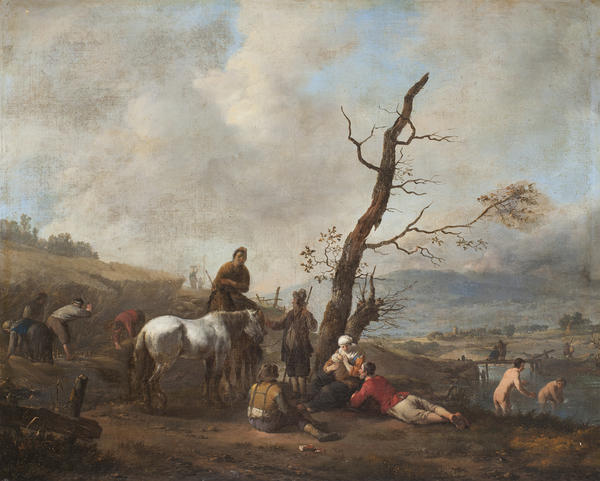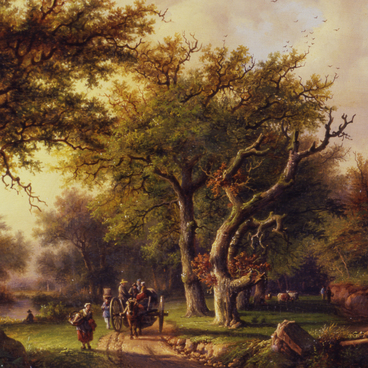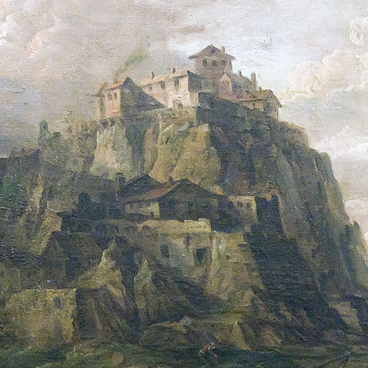The painter and graphic artist Johannes Lingelbach was German by birth, but lived in Amsterdam and represented an Italianizing trend in Dutch painting. After 1642, he worked in Paris for two years, and then spent six years in Italy. He returned to Holland in 1650. He mostly painted everyday scenes from Italian life, landscapes, and figures in paintings by other artists, especially by Jan Wijnants. In Johann Lingelbach’s creative heritage, two types of paintings may be singled out.
Later, Lingelbach constantly returned to the compositional landscape scheme found at that time, and to certain graphic elements. The painting can be considered an example of Lingelbach’s artistic skill. The genre scene is painted against the backdrop of Italian landscape; however, the soft and muted color scheme unified by diffused sunlight is a trademark of Dutch school artist. It is primarily based on the reflective potential of the light ground-color, on top of which brown varnish and semi-covering paint layers are applied.
The first one includes large-format views of crowded Italian harbors, markets, battle and hunting scenes against the backdrop of an idealized southern landscape. The second category includes small-sized scenes of everyday life or hunting, shown against the backdrop of composite landscapes, reminiscent of the Dutch countryside, but with mountains outlines in the distance.
Resting Reapers is a typical example of such a painting. Low double-sided wings (slightly sloping hills, and shrubs), a low skyline, and a dry tree in the foreground are elements constantly used by the artist. Such scenes almost invariably feature, in their center, a white horse depicted in a turn to the right, sometimes with a rider. The painting from Radishchev Museum’s collection is obviously an example of the master’s mature work, and was created after his return from Italy, not earlier than the 1650s.
Later, Lingelbach constantly returned to the compositional landscape scheme found at that time, and to certain graphic elements. The painting can be considered an example of Lingelbach’s artistic skill. The genre scene is painted against the backdrop of Italian landscape; however, the soft and muted color scheme unified by diffused sunlight is a trademark of Dutch school artist. It is primarily based on the reflective potential of the light ground-color, on top of which brown varnish and semi-covering paint layers are applied.
X-ray radiography revealed the artist’s search for the most effective composition, showing that the lower paint layers had been scraped off with a palette knife. The painting is an example of a famous 17th century Dutch artist’s technical mastery. However, the bathing peasant women are painted in quite an artless manner, because Dutch artists rarely depicted naked female body, being brought up in the strict spirit of Protestantism.



